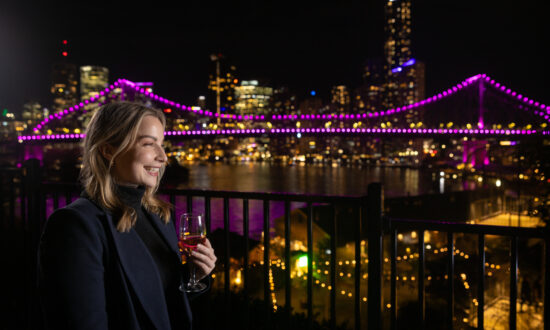By David Throsby and Katya Petetskaya
————————
Arts companies and individual artists in Australia are supported by government arts agencies, philanthropists, industry bodies, private donors and patrons. However, it is frequently overlooked that a major source of support for the arts in this country comes from artists themselves.
Artists such as writers, actors, visual artists, musicians, dancers and others effectively make a personal financial contribution to supporting cultural activity through their willingness to accept a lower reward for their work than they could earn elsewhere.
Their subsidy to the arts helps to sustain artistic practice and represents a significant personal investment in the future of the cultural life of this country.
The incomes earned by professional artists are perennially low. Our new research, funded by Creative Australia and published today, shows in the 2021–22 financial year, artists’ income from creative work averaged only A$23,200. Even when other sources of income are added – such as from teaching or working outside the arts – the average gross income of Australian artists was still only $54,500 in the year.
Forgone income and volunteer hours
Artists are more highly educated than the workforce at large. Three-quarters hold a university degree, compared with only 36 per cent in the wider labour force, and more than 40 per cent of artists also hold a postgraduate degree, compared with 30 per cent of all Australian professionals.
Given these levels of training, the extent of artists’ forgone income can be estimated by comparing their income with those of professional workers such as lawyers, doctors and accountants who have similar levels of training, qualifications and experience.
Data compiled by the Australian Bureau of Statistics for different occupational groups Australia-wide show in the 2021–22 year, the average income of professional workers was $98,700.
Even in comparison with the $73,300 average yearly earnings of all employed people in Australia, artists’ earnings were significantly lower.
Like many other professionals and workers in Australia, artists engage in continuous learning and mastering new techniques and concepts to advance their practice.
Indeed, data from our successive surveys into artists’ economic circumstances reveal artists invest more in their formal education than workers in other occupations.
Despite the income challenges artists face, they frequently reach into their own pockets to fund their projects. Our data shows 78 per cent of artists use personal savings to sustain their practice, underscoring a profound financial commitment that often goes unrecognised.
In addition to these financial investments, professional artists are also often asked to donate their time and expertise to public or corporate events and to community activities.
Our survey data indicate the value of these donations averages $5600 annually per donating artist.
Moreover, artists engage in volunteering, spending on average about five hours weekly on unpaid work of benefit to the community.
Working outside the arts industry
Few professional artists can work full-time at their creative practice. Most are obliged, by choice or necessity, to take on other work beyond their immediate core creative practice.
A mere 9 per cent of artists in Australia are able to spend all their working time at their creative practice. And even when other arts-related work, such as teaching, is added, only 44 per cent can dedicate all their working time solely to total arts work.
There is a discrepancy between artists’ desired and actual time spent on creative work. Two-thirds of artists would like to devote more time to their creative practice, but economic circumstances prevent them from doing so.
These constraints include insufficient return from creative work, leading to the need to earn an income elsewhere. Again, such additional income generated through jobs unrelated to their art is often invested back into artistic practice.
While the incomes of Australian artists have remained relatively stagnant over the years when adjusted for inflation, their average expenses related to their artistic practice have been increasing dramatically. In the 2021–22 financial year, artists spent an average of 73 per cent of their artistic income on expenses related to producing their work.
Of all the events that have affected Australian life and work in recent times, none has been as profound as the COVID pandemic.
Professional artists, whose working conditions were already precarious, were particularly badly hit.
Our results indicate that, by the end of 2022, only one-third of all artists had fully returned to their pre-COVID working hours, with just over half partially returned or in the process of doing so.
It is significant that 16 per cent did not believe they would be able to return to their previous working hours as an artist.
Key investors in the arts
The arts in Australia are supported by a complex ecosystem in which individual professional artists are a central component.
It is important that policy initiatives recognise the role of artists as key investors in supporting the arts ecosystem in this country and the precariousness of their financial situation.
The dedication and commitment of professional artists, often insufficiently acknowledged, is making an essential contribution to the growth and sustainability of Australian arts.![]()
David Throsby is a Distinguished Professor of Economics at Macquarie University and Katya Petetskaya is research project director at the Department of Economics at Macquarie University. This article is republished from The Conversation under a Creative Commons licence. Read the original article.
![]()
Support local arts journalism
Your support will help us continue the important work of InReview in publishing free professional journalism that celebrates, interrogates and amplifies arts and culture in South Australia.
Donate Here




